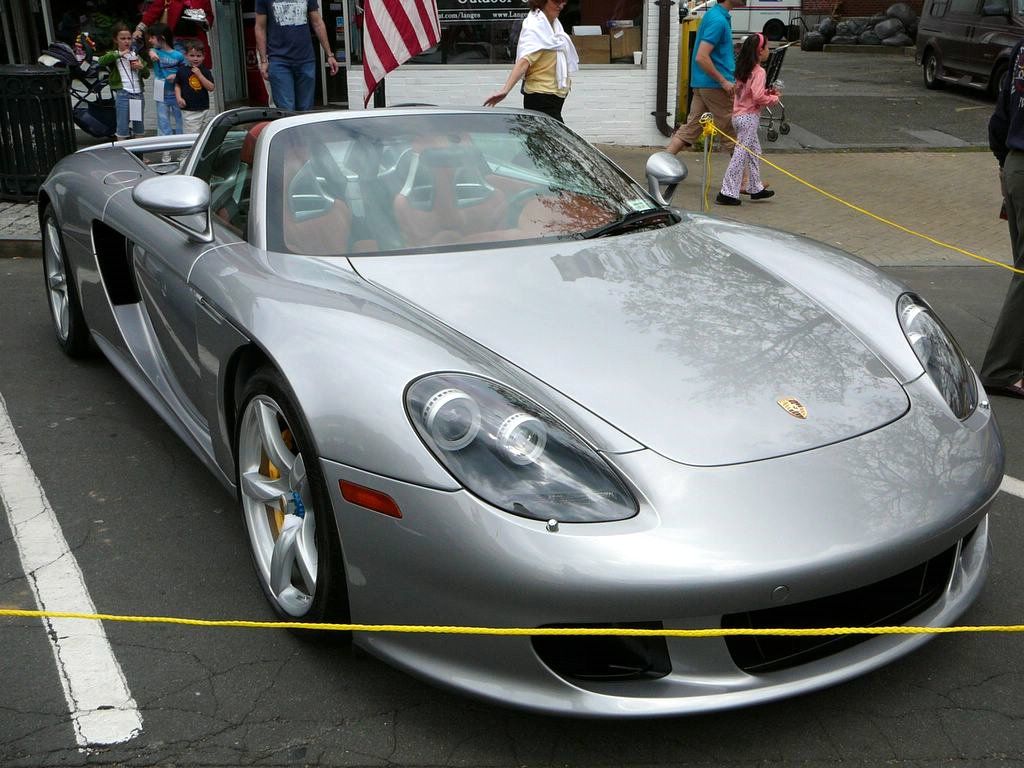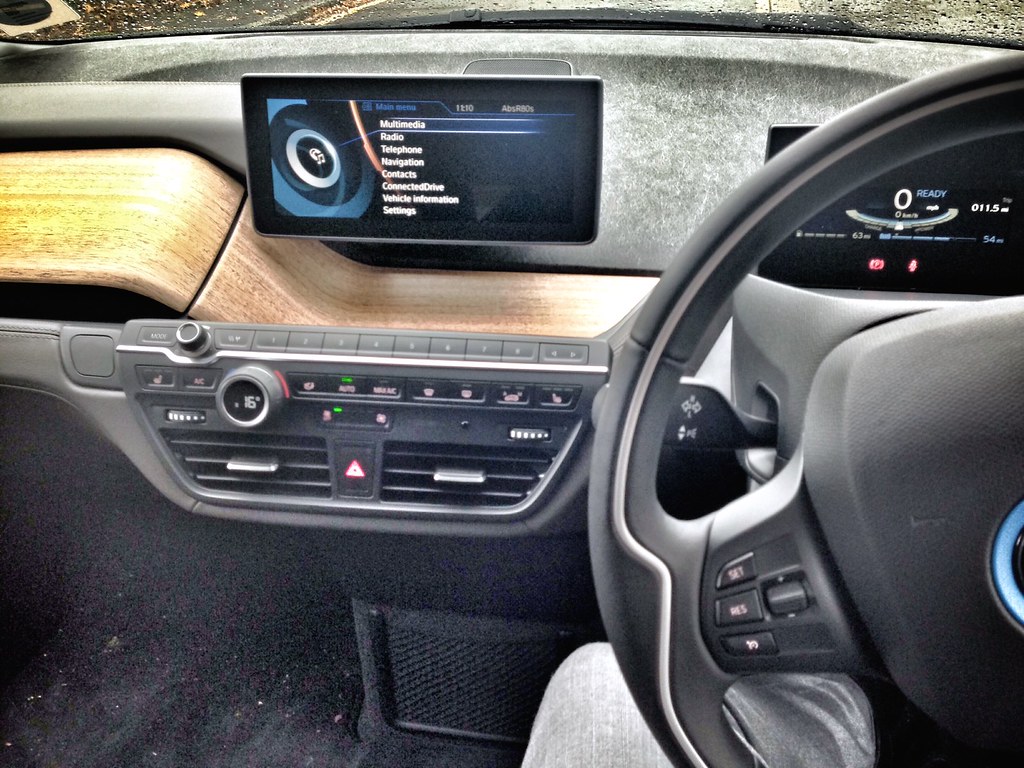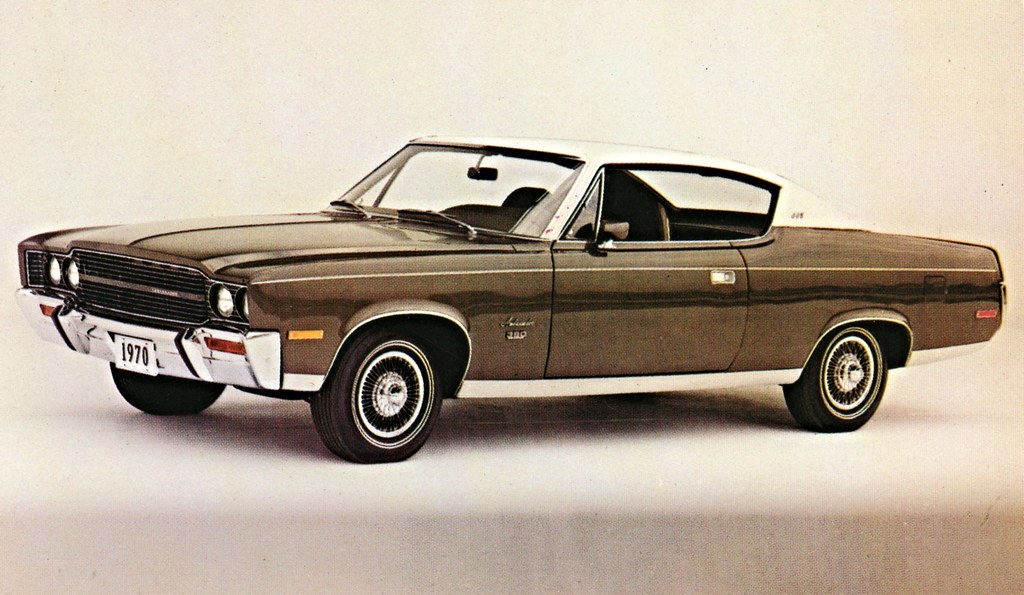
The American automotive landscape of the 1950s and 1960s was a vibrant tapestry of innovation, audacious design, and a relentless pursuit of performance. It was an era where the automobile wasn’t just a mode of transport, but a canvas for engineers and designers to express the nation’s burgeoning prosperity and cultural aspirations. From sleek sedans to powerful machines, these decades saw the birth and brief, glorious reign of countless models that etched their names into the annals of history, only to eventually fade from production. While some nameplates experienced revivals, the specific iterations of these vehicles—their original forms, their groundbreaking technologies, and their unique market positions—are forever a part of a bygone era.
For the true automotive enthusiast, there’s a certain melancholic pleasure in looking back at these mechanical marvels, understanding the forces that shaped them and ultimately led to their retirement. Whether it was evolving consumer tastes, stiff competition, or the inherent lifecycle of product lines, these cars represent significant milestones in American engineering and design. They pioneered features, set trends, and captured the imagination of a generation, often becoming symbols of progress and personal freedom. Their stories are not just about metal and horsepower, but about the very pulse of America during one of its most dynamic periods.
In this deep dive, we embark on a journey through the early part of this golden age, bringing into focus seven remarkable American-manufactured cars from the 1950s that are no longer made. We’ll explore their distinctive characteristics, the engineering prowess that defined them, and the impact they had on drivers and the industry alike. Prepare to appreciate the detailed craftsmanship, the bold stylistic choices, and the technical innovations that made each of these vehicles a legend in its own right, long after their production lines fell silent.

1. **Nash Statesman (1950-1956)**
The Nash Statesman, an independent car manufacturer Nash Motors creation, emerged in 1950 with a distinctive approach to post-war automobile design. It featured an advanced unit-body construction, a method that integrated the body and chassis into a single, strong structure, offering superior rigidity and often lighter weight. This design philosophy was complemented by a fastback aerodynamic styling that was progressive for its time, creating a sleek profile that stood out on American roads. The Statesman was an impressive vehicle in terms of its construction and aesthetic appeal, and it shared a striking resemblance to its larger sibling, the Ambassador, from the cowl rearward.
Despite its shared lineage with the Ambassador, the Statesman was intentionally designed to be lighter, a characteristic that contributed significantly to its fuel efficiency—a notable selling point in an era where fuel economy was gaining importance. This focus on efficiency did not come at the expense of passenger comfort or innovative features. One of the most unique and talked-about aspects of the Nash Statesman was its Nash-exclusive “Airliner Reclining” front seat. This ingenious design allowed the front seat to be fully converted into a bed, offering an unparalleled level of versatility and comfort for travelers or those seeking a novel in-car experience.
This feature, ahead of its time, epitomized Nash’s commitment to thoughtful design and passenger convenience, catering to a segment of buyers who appreciated efficiency and comfort packaged within a distinctive design. While Nash Motors, as an independent manufacturer, eventually merged with Hudson to form AMC, the Statesman left its mark as a car that dared to be different. It embodied a spirit of intelligent design that anticipated modern trends in automotive construction and user-centric features. Its legacy is a testament to the diverse and inventive landscape of early post-war American automobile manufacturing.
Read more about: The 18 Beloved Cars We Wish They Would Bring Back

2. **Chevrolet Bel Air (1950-1957)**
The Chevrolet Bel Air made its initial debut in 1950, quickly establishing itself as a significant entry in the American automotive market. This vehicle was conceived as a revision of the previously unsuccessful Stylerline series, and its introduction marked a pivotal moment for Chevrolet. Unlike its predecessor, the Bel Air immediately resonated with audiences, blending a pleasant aesthetic with a touch of luxury that appealed to a broad demographic. Its design successfully captured the optimistic spirit of the post-war era, moving away from utilitarian designs towards something more stylish and aspirational.
Chevrolet offered several iterations of the Bel Air throughout its production run, demonstrating the company’s commitment to evolving the model. The first generation, which ran from 1950 to 1954, laid the groundwork for its subsequent success, setting a benchmark for what a mainstream American car could offer in terms of style and comfort. The second generation, produced from 1955 to 1957, is arguably the most iconic, featuring the now-legendary “Tri-Five” design that cemented the Bel Air’s status as a classic. These models were celebrated for their crisp lines, generous chrome accents, and vibrant two-tone paint schemes, becoming instant symbols of 1950s Americana.
Underneath its appealing exterior, the Bel Air offered a range of robust engines and reliable mechanicals that made it a practical choice for families and enthusiasts alike. Its success underscored Chevrolet’s ability to gauge and meet consumer preferences, making it a powerful contender against offerings from Ford and other rivals. The Bel Air’s blend of accessibility, style, and performance ensured its popularity for a significant period. Although the nameplate persisted in various forms and markets for decades, the original, definitive generations produced between 1950 and 1957 are the ones that truly captured the zeitgeist and remain highly sought after by collectors, embodying a golden age of American car design and engineering that is no longer in production.
Car Model Information: 2025 Genesis GV70 2.5T
Name: Chevrolet Bel Air
Caption: 1957 Chevrolet Bel Air convertible
Manufacturer: Chevrolet
Production: 1949–1980
ModelYears: 1950–1981
Class: Full-size
Layout: FR layout
Predecessor: Chevrolet Fleetline,Chevrolet Biscayne
Successor: Chevrolet Impala
Categories: 1950s cars, 1960s cars, 1970s cars, 1980s cars, Articles with short description
Summary: The Chevrolet Bel Air is a full-size car produced by Chevrolet for the 1950–1981 model years. Initially, only the two-door hardtops in the Chevrolet model range were designated with the Bel Air name from 1950 to 1952. With the 1953 model year, the Bel Air name was changed from a designation for a unique body shape to a premium level of trim applied across a number of body styles. The Bel Air continued with various other trim level designations, and it had gone from a mid-level trim car to a budget fleet sedan when U.S. production ceased in 1975. Production continued in Canada, for its home market only, through the 1981 model year.
Get more information about: Chevrolet Bel Air
Buying a high-performing used car >>>
Brand: Chevrolet Model: Bel Air
Price: $40,000 Mileage: 24,970 mi.
Read more about: The 18 Beloved Cars We Wish They Would Bring Back

3. **Hudson Hornet (1951-1957)**
The Hudson Hornet, produced by the independent Hudson Motor Car Company, burst onto the scene in 1951, quickly distinguishing itself not only for its distinctive “step-down” design but also for its unexpected dominance in motorsport. The Hornet was available in various body styles, catering to a wide range of preferences, including a two-door coupe, a four-door sedan, a convertible, and a stylish pillarless hardtop coupe. This diversity in offerings allowed Hudson to capture a significant portion of the market, offering practical family transport alongside more performance-oriented options. The “step-down” design, which meant passengers stepped down into the car rather than up, provided a lower center of gravity, which inherently contributed to superior handling and a smoother ride.
What truly propelled the Hudson Hornet into legend, however, was its astounding success in stock car racing. Hudson Motor Car Company strategically got involved with the burgeoning sport, and the Hornet, particularly the “Fabulous Hudson Hornet” driven by Marshall Teague and later Dick Rathmann and others, became a force to be reckoned with. The results were nothing short of spectacular: in 1952, the Hornet won an incredible 27 out of 34 NASCAR Grand National races. This wasn’t a fluke; the winning streak continued with 22 victories out of 37 races in 1953, and a further 17 wins from 37 races in 1954.
This unparalleled dominance on the track was largely due to the Hornet’s robust “Twin H-Power” straight-six engine and its advanced suspension system, which gave it an edge in handling and durability. The Hornet’s racing prowess translated into significant brand prestige and sales success, proving the adage “Win on Sunday, Sell on Monday.” It demonstrated that an independent manufacturer could compete and even outperform the larger Detroit giants through clever engineering and strategic marketing. The model’s production continued until 1957, marking the end of an era for Hudson as an independent entity, which later merged to form American Motors Corporation. The Hudson Hornet remains a cherished icon, not just for its unique design and comfort, but primarily for its legendary performance history that showcased American ingenuity and competitive spirit, a powerful legacy for a car no longer produced.
Car Model Information: 1953 Hudson Hornet NASCAR Tribute
Caption: 1951 Hudson Hornet (4-door sedan)
Manufacturer: Hudson Motor Car Company,American Motors Corporation
Production: 1950–1957
Class: Full-size car,Muscle car
Layout: Front-engine, rear-wheel-drive layout
Name: Hudson Hornet
Categories: AMC vehicles, All accuracy disputes, All articles with dead external links, All articles with unsourced statements, Articles with dead external links from August 2024
Summary: The Hudson Hornet is a full-size car manufactured by Hudson Motor Car Company of Detroit, Michigan from 1951 until 1954, when Nash-Kelvinator and Hudson merged to form American Motors Corporation (AMC). Hudson automobiles continued to be marketed under the Hudson brand name through the 1957 model year.
The first-generation Hudson Hornets featured a functional “step-down” design with dropped floor pan and a chassis with a lower center of gravity than contemporary vehicles that helped the car handle well — an advantage for racing. The Hornet’s lower and sleeker look was accentuated by streamlined styling, sometimes called “ponton” styling.
Following the merger forming AMC in 1954, Hudson cars were built on the newer factory assembly line for Nash Statesman/Ambassador unibody chassis; therefore, all second-generation Hudson Hornets were restyled Nash automobiles that were badge engineered as Hudsons.
Get more information about: Hudson Hornet
Buying a high-performing used car >>>
Brand: Hudson Model: Hornet
Price: $53,000 Mileage: 22,072 mi.
Read more about: The 18 Beloved Cars We Wish They Would Bring Back

4. **Lincoln Capri (1952-1959)**
The Lincoln Capri, introduced in 1952, represented a full-sized, entry-level luxury car that immediately established itself with a name inspired by the picturesque Italian island in the Gulf of Naples, evoking a sense of European elegance and sophistication. Initially positioned as a premium offering, it served as a robust and stylish option within Lincoln’s lineup. When the company subsequently introduced the even more luxurious Lincoln Premiere (and Continental), the Capri gracefully transitioned into the role of the new standard Lincoln product line. This strategic shift allowed it to become a foundational model, replacing the Cosmopolitan and offering accessible luxury to a wider segment of the market while maintaining the brand’s prestigious image.
For the 1956 model year, the Lincoln Capri underwent a significant restyling, a common practice in the competitive 1950s automotive industry to keep models fresh and appealing. This redesign brought a modernized aesthetic and, more importantly, a substantial upgrade in performance: the introduction of the new 285 hp Lincoln Y-Block V8 engine. This powerful engine provided the Capri with enhanced acceleration and cruising capabilities, firmly cementing its place as a capable and luxurious touring machine. Along with the engine upgrade, the 1956 Capri was also loaded with an array of power accessories, a hallmark of luxury vehicles of the era, further enhancing driver convenience and comfort.
The evolution of the Capri continued, with the 1958-59 models experiencing a dramatic increase in size, making them one of the largest cars ever produced by Lincoln. This expansion reflected a contemporary trend in American automotive design towards larger, more imposing vehicles, showcasing opulence and road presence. While the Capri nameplate, much like many others from its era, eventually ceased production in its original form, its journey from an initial luxury offering to a redesigned powerhouse and then an enlarged statement of grandeur illustrates the dynamic nature of American car manufacturing. It stood as a testament to Lincoln’s vision for accessible luxury and performance, now a classic revered for its historical significance and imposing presence.
Car Model Information: 1954 Lincoln Capri 318 PS LOADED!
Caption: 1953 Lincoln Capri sedan
Name: Lincoln Capri
Predecessor: Lincoln Cosmopolitan
Successor: Lincoln Premiere
Manufacturer: Lincoln Motor Company
Production: 1952–1959
Class: Full-size,luxury car
Layout: FR layout
Categories: All articles with dead external links, Articles with dead external links from December 2017, Articles with permanently dead external links, Articles with short description, Cars introduced in 1952
Summary: The Lincoln Capri is an automobile that was sold by the Lincoln division of Ford Motor Company from 1952 until 1959. A full-size luxury car, the Lincoln Capri derives its name from an Italian island in the Gulf of Naples. Positioned as a premium trim variant of the two-door Lincoln Cosmopolitan, the Capri was introduced in 1952 as a stand-alone model line serving as the premium Lincoln. With the introduction of the Lincoln Premiere (and Continental), the Capri replaced the Cosmopolitan as the standard Lincoln product line.
The Lincoln Capri was produced across three generations; following its withdrawal, Lincoln rebranded the Capri using only its division name (following a practice used from 1946 to 1951). Along with the Lincoln Premiere and the Continental model lines, the Lincoln Capri was replaced by the 1961 Lincoln Continental.
Get more information about: Lincoln Capri
Buying a high-performing used car >>>
Brand: Lincoln Model: Capri
Price: $12,995 Mileage: 46,527 mi.
Read more about: The 18 Beloved Cars We Wish They Would Bring Back
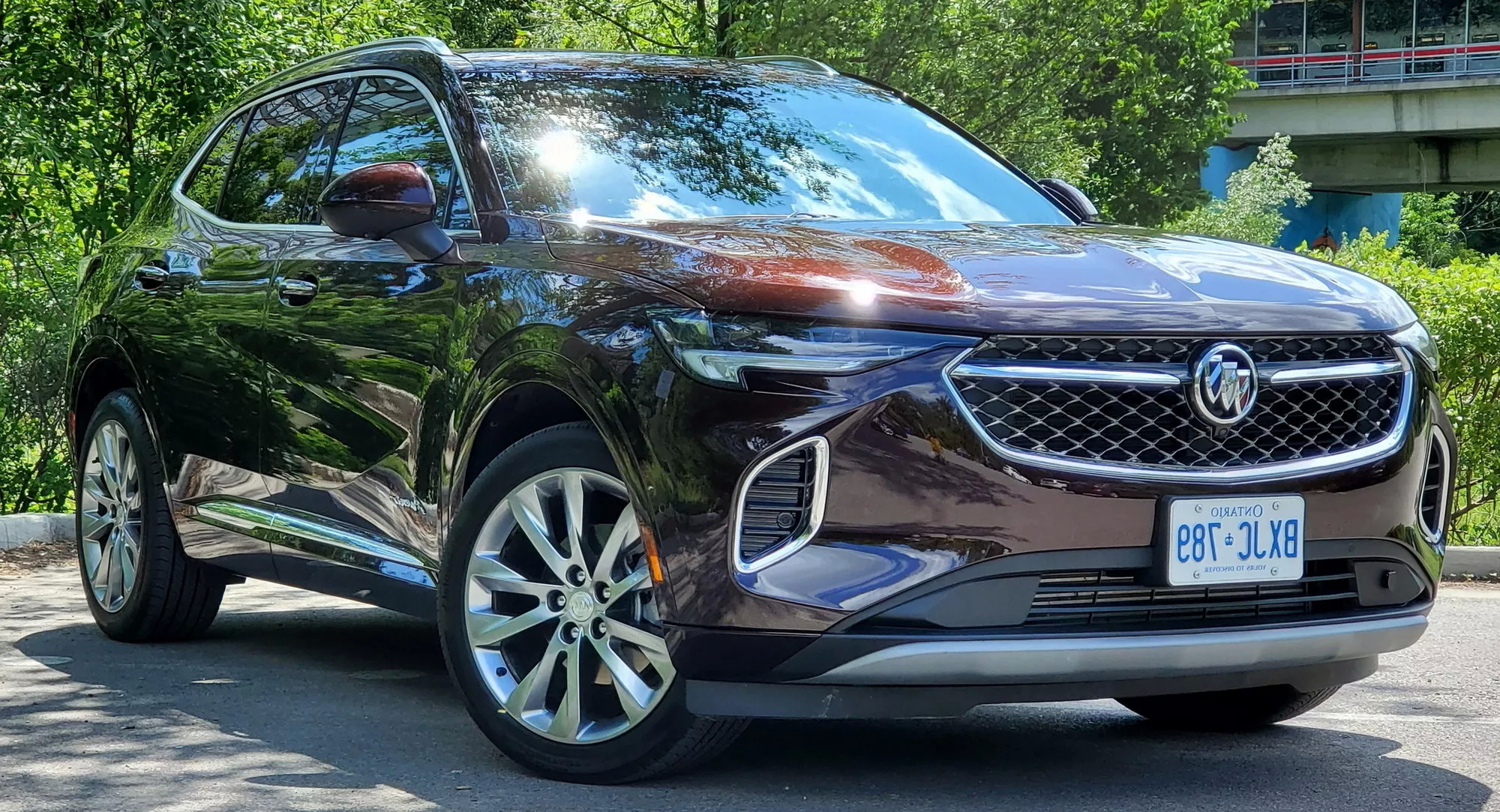
5. **Buick Skylark (First Generation: 1953-1954)**
The Buick Skylark made its celebrated debut in 1953, marking a special occasion as it commemorated the 50th anniversary of the Buick motor company. This vehicle, named after the bird, was a premium offering from the General Motors subsidiary, designed to showcase the pinnacle of Buick’s styling and engineering capabilities at the time. The initial production run was brief, spanning only the 1953 and 1954 model years, making the first-generation Skylark a highly distinctive and sought-after classic. Its design was characterized by elegant lines, extensive chrome, and an overall sense of sophisticated grandeur that truly set it apart from its contemporaries.
What truly distinguished the first-generation Skylark was its array of optional features that were, in many cases, standard equipment on this anniversary model, positioning it as a halo car for Buick. Beyond its luxurious appointments, the car’s mechanical heart was particularly notable: the groundbreaking Nailhead V8 engine. This engine, known for its unique valve cover design resembling a row of nails, offered robust power and a smooth delivery, contributing significantly to the Skylark’s refined driving experience. The Nailhead V8 was an engineering marvel for its time, providing a solid foundation for Buick’s performance image and becoming a signature powerplant for the brand.
While Buick attempted to revive the Skylark nameplate multiple times over the subsequent decades, and even had it produced in Iran at one point, none of these later iterations captured the same essence or historical significance as the original 1953-54 models. These early Skylarks were not just cars; they were statements of automotive artistry and engineering prowess, embodying Buick’s celebratory spirit. The brief but impactful life of the first-generation Skylark ensures its place as a cherished collectible, a classic American car that, in its initial, pure form, is no longer made, representing a golden moment in Buick’s storied history.
Car Model Information: 1969 Buick Skylark
Name: Buick Skylark
Caption: 1972 Buick Skylark
Manufacturer: Buick
ModelYears: 1953–1954,1961–1972,1975–1998
Layout: FR layout,Front-engine, front-wheel-drive layout
Successor: Buick Century
Categories: 1980s cars, 1990s cars, All articles with unsourced statements, Articles with short description, Articles with unsourced statements from June 2018
Summary: The Buick Skylark is a passenger car formerly produced by Buick. The model was made in six production runs, during 46 years, over which the car’s design varied dramatically due to changing technology, tastes, and new standards implemented over the years. It was named for the species of bird called skylark.
The Skylark name first appeared on a limited production luxury convertible using the Buick Roadmaster’s chassis for two years, then was reintroduced in 1961 as a higher luxury content alternative to the entry-level Buick Special on which the Skylark was based upon. It was then positioned as Buick’s luxury performance model when the Buick GSX was offered. As GM began downsizing during the late 1970s, the Skylark became the entry-level model when the Special nameplate was used as a trim package designation, then in the 1980s was offered as a front-wheel-drive vehicle where it was both a coupe and sedan for three different generations.
Get more information about: Buick Skylark
Buying a high-performing used car >>>
Brand: Buick Model: Skylark
Price: $42,997 Mileage: 48,162 mi.
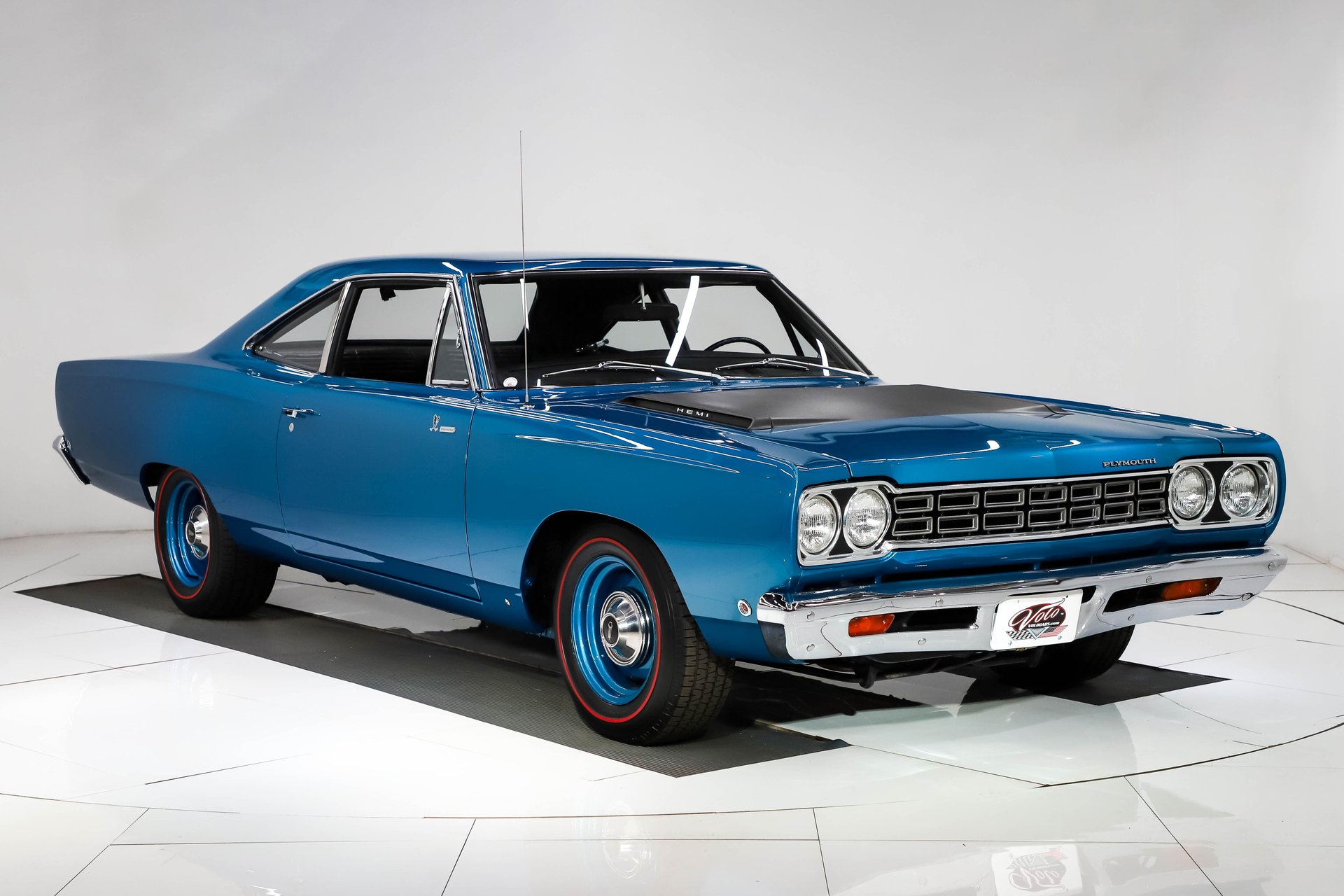
6. **Plymouth Savoy (1954-1964)**
The Plymouth Savoy first appeared in 1954, initially positioned as a full-sized vehicle within the Plymouth lineup. For a period, it served this role effectively, offering ample interior room and solid performance characteristics that appealed to a wide range of buyers. However, with the discontinuation of the Plymouth Plaza, a strategic shift occurred, and the Savoy nameplate was subsequently moved to a smaller vehicle platform. This adjustment allowed Plymouth to cater to evolving market demands, focusing on different segments while retaining the established Savoy branding. Despite this change in classification, the Savoy continued to draw interest for its unique value proposition.
The Savoy particularly attracted customers who sought a low-cost vehicle that didn’t compromise on interior space, especially evident in its generous front legroom measuring 45.5 inches. This spaciousness, combined with the availability of a powerful V-8 engine and the convenience of an automatic transmission, made the Savoy a compelling choice for consumers looking for a practical yet capable automobile. It hit a sweet spot in the market, providing the benefits of a full-sized car experience at a more accessible price point. The car proved to be especially popular with fleet customers, who valued its reliability, spaciousness, and cost-effectiveness for commercial applications.
In a move that further underscored its appeal to utility and commercial sectors, Plymouth spun off a new model specifically designed for fleets in 1960, christening it the Plymouth Taxi Special. This derivative highlighted the Savoy’s underlying robust platform and its suitability for heavy-duty use, further solidifying its reputation as a workhorse. The Savoy’s production continued until 1964, having carved out a distinct niche for itself in the American automotive landscape. While its journey involved shifts in size and target audience, the Plymouth Savoy remains a testament to practical engineering and market adaptability, a classic example of an American vehicle that is no longer manufactured in its original, versatile form.
Car Model Information: 1957 Plymouth Savoy
Caption: 1958 Plymouth Savoy 4-door Sedan
Name: Plymouth Savoy
Assembly: unbulleted list
Manufacturer: Plymouth (automobile)
Production: 1954–1964 (1965 in Canada)
Layout: FR layout
Aka: Dodge Kingsway
Class: Full-size car
Categories: 1960s cars, All articles lacking in-text citations, All articles that may contain original research, Articles lacking in-text citations from November 2009, Articles that may contain original research from July 2009
Summary: The Plymouth Savoy is an automobile which was produced in the 1951 through 1964 model years by Plymouth.
As with Plymouth’s Plaza and Belvedere models, the Savoy was named after an upscale hotel, the Savoy Hotel in London.
Get more information about: Plymouth Savoy
Buying a high-performing used car >>>
Brand: Plymouth Model: Savoy
Price: $39,995 Mileage: 81,800 mi.
Read more about: The 18 Beloved Cars We Wish They Would Bring Back

7. **AMC Ambassador (1954-1974)**
The AMC Ambassador holds a unique place in American automotive history, representing a continuation of a venerable nameplate under a new corporate umbrella. Its story begins in 1954 with the rebranding of the Nash Ambassador, a vehicle that had been in production since 1927. This rebranding occurred following the merger of Nash with Hudson Motor Car Company, which together formed the American Motor Corporation (AMC). The decision to carry over the Ambassador nameplate was a strategic one, capitalizing on its long-standing recognition and reputation for quality and spaciousness. The use of the Ambassador nameplate for five decades, spanning its Nash and AMC eras, makes it one of the longest-lived automobile nameplates in history, a testament to its enduring appeal and brand strength.
Under AMC, the Ambassador continued its legacy as a full-sized, comfortable vehicle, often positioned as AMC’s flagship model. Throughout its extensive production run, the Ambassador was known for offering a substantial and refined driving experience. It also holds a significant historical distinction: it was the first American automobile to feature a front-end, fully integrated heating, ventilating, and air-conditioning system. This groundbreaking innovation was a testament to AMC’s commitment to passenger comfort and convenience, setting a new standard for climate control systems in American cars. This integrated system provided superior thermal management and cabin air quality compared to piecemeal add-on units common at the time, enhancing the overall luxury perception of the Ambassador.
The AMC Ambassador underwent numerous restylings and engineering updates over its two-decade tenure, reflecting the changing tastes and technological advancements of the 1950s, ’60s, and early ’70s. From its initial post-merger form to its final iterations, it consistently offered robust V8 engine options, comfortable interiors, and a distinct American sensibility. Its impressive longevity, coupled with its pioneering integrated HVAC system, solidifies the AMC Ambassador’s status as a pivotal model in American automotive history. Though the brand and the car are long gone, its influence on passenger comfort and its record as one of the longest-running nameplates echo through the industry, a truly classic American car no longer in production.
As we journey deeper into the golden age of American motoring, our exploration now shifts to a new wave of classics that emerged from the mid-1950s through the early 1960s. This period continued the relentless push for innovation, bringing forth vehicles that not only defined their time through distinctive style and robust performance but also left an indelible mark on the automotive landscape. These machines, though no longer in production in their original forms, embody the ambition and ingenuity that characterized American manufacturing, capturing the evolving desires of a nation on the move. We continue our detailed look at these unforgettable vehicles, appreciating their engineering marvels, captivating aesthetics, and the enduring legacies that resonate with enthusiasts today.
Read more about: The 18 Beloved Cars We Wish They Would Bring Back
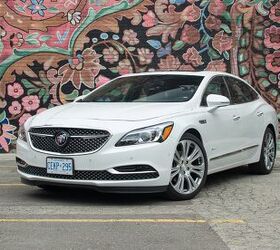
8. **Buick Century (1954-1958, 1973-2005)**
The Buick Century, a nameplate steeped in history, first graced American roads from 1936 to 1942 as a full-sized car. Its production, like many others, was temporarily halted during the war years, only to be resurrected several years after the conflict’s conclusion. This hiatus merely built anticipation for its eventual return, bringing with it a legacy of performance and prestige.
Upon its reintroduction, the four-door Century firmly retained its position as Buick’s undisputed performance car, a title it proudly upheld in the competitive 1950s market. This era was characterized by a horsepower race, and the Century certainly played its part, significantly increasing its engine power from a respectable 200 hp to a formidable 236 hp. This enhancement ensured it delivered exhilarating acceleration and a commanding presence on the highway.
The Century’s enduring appeal was its blend of spaciousness, which was a hallmark of full-sized vehicles, with a genuinely thrilling driving experience. It represented Buick’s commitment to offering both luxury and power. Though the original iteration from the 1950s eventually concluded its run, the Century nameplate was revived later, a testament to its strong brand recognition and the lasting impression of its initial glory as a true American performance classic.
Car Model Information: 2001 Buick Century Limited
Name: Buick Century
Manufacturer: Buick
ModelYears: 1936–1942,1954–1958,1973–2005
Class: Full-size car,Mid-size car
BodyStyle: coupe,sedan (car),station wagon
Layout: FR layout,Front-engine, front-wheel-drive layout
Predecessor: Buick Master Six
Successor: Buick LaCrosse,Buick Regal#Regal TourX
Categories: 1930s cars, 1940s cars, 1950s cars, 1970s cars, 1980s cars
Summary: Buick Century is the model name that was used by Buick for a line of upscale full-size cars from 1936 to 1942 and 1954 to 1958, as well as from 1973 to 2005 for mid-size cars.
The first Buick Century debuted as the Series 60 then renamed in 1936 as a shorter and lighter model featuring the same engine as the bigger Roadmaster and Limited series giving it more performance while using the shorter wheelbase body of the Buick Special. During the 1930s and 1940s it was Buick’s companion to the top level Roadmaster and was offered as a 2-door and 4-door sedan and convertible. The Century name was used on six generations of cars of varying sizes as well as performance and trim levels. In 1969, Buick developed a concept car known as the Century Cruiser. In the 1970s, the Century Regal became a separate model and market positioning between the two products changed from year to year depending on sales. The Century was updated to front wheel drive in 1982 and was Buick’s 2-door coupe, 4-door sedan and station wagon, with regular updates and feature upgrades as customer preferences changed over time.
Get more information about: Buick Century
Buying a high-performing used car >>>
Brand: Buick Model: Century
Price: Not Priced Mileage: 235,257 mi.
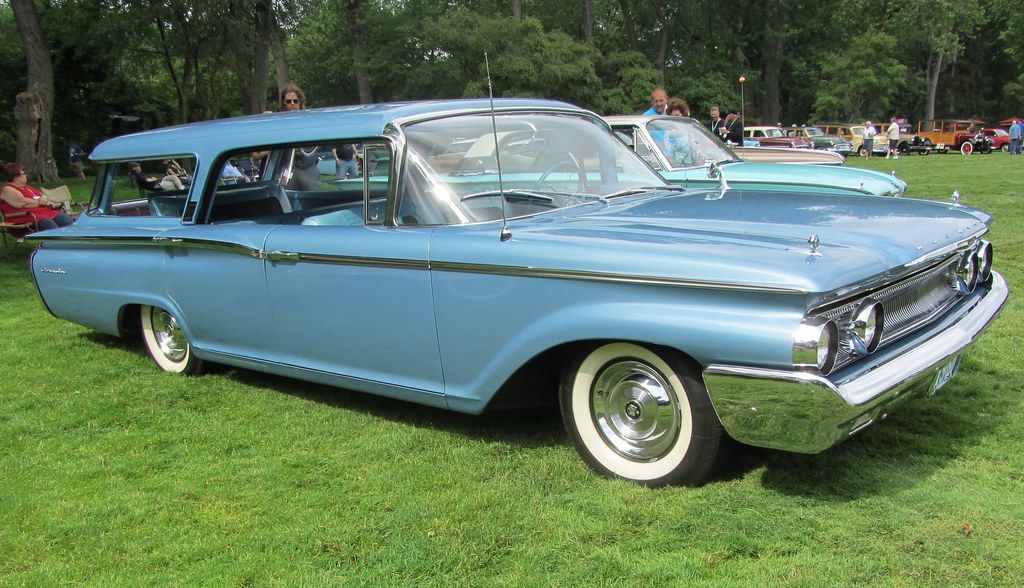
9. **Mercury Commuter (1955, 1962, 1964-1968)**
Emerging in 1955, the Mercury Commuter quickly established itself as a distinctive full-sized station wagon, a body style that perfectly catered to the growing American family and their evolving suburban lifestyles. It offered practicality married with the contemporary styling cues of the Mercury brand, making it a versatile and appealing choice for a broad segment of buyers.
Initially, the Commuter was available in a choice of either a two-door or a four-door wagon configuration, providing flexibility to meet different consumer needs. However, responding to market trends and preferences, Mercury discontinued the two-door version after the 1959 model year. This refinement in its lineup allowed the brand to focus on the more popular four-door format, which remained a staple for families seeking ample cargo and passenger space.
The Commuter experienced a brief pause in its production for the 1963 model year, a period during which Mercury introduced the Meteor. Nevertheless, its utilitarian appeal and established recognition led to its swift reinstatement the following year. The Mercury Commuter, with its robust design and adaptability, carved out a significant niche as a dependable family hauler, representing a classic American wagon that, in its original form, is no longer part of Mercury’s (or any current manufacturer’s) lineup.
Car Model Information: 1960 Mercury Commuter
Caption: 1957 Mercury Commuter 4-door (with four headlight “Quadri Beam” option)
Name: Mercury Commuter
Manufacturer: Mercury (automobile)
Production: 1957–1962 , 1964–1968
Layout: FR layout
Class: Full-size
Related: Mercury Monterey,Ford Del Rio,Ford Ranch Wagon
BodyStyle: station wagon
Engine: 312 cuin
Abbr: on
Wheelbase: 126.0 in
Length: 218.2 in
Width: 80.7 in
Height: 57.8 in
Weight: convert
Categories: 1950s cars, 1960s cars, All stub articles, Articles with short description, Cars introduced in 1957
Summary: The Mercury Commuter is a full-size station wagon that was produced by Mercury from 1957 until 1968. When introduced for the 1957 model year it was priced below Mercury’s other two new full size wagons as a part of the Mercury Monterey series, alongside the mid-range Voyager and the top-level Colony Park. In 1957 the same 368 cu in (6.0 L) Lincoln Y-Block V8 that was standard equipment on the Mercury Turnpike Cruiser was optional equipment on the Commuter. From 1957 until 1960 all Mercury station wagons were hardtops, and also offered a rear window that retracted into the tailgate that was not offered on Ford branded station wagons.
The Commuter was initially available as a two-door wagon and as a four-door wagon, and in 1959 all Mercury station wagons were combined into the “Country Cruiser” series. It was temporarily absent in 1963, in concession to the new, smaller intermediate Meteor station wagons, but the full-sized platform was reinstated for 1964, when the Meteor was discontinued. The Commuter was phased out, like the full-size Mercury Montclair and Park Lane, after the 1968 model year when the Colony Park became the only Mercury station wagon until 1991.
Get more information about: Mercury Commuter
Buying a high-performing used car >>>
Brand: Mercury Model: Commuter
Price: $49,500 Mileage: 23,812 mi.

10. **Chrysler 300 Letter Series (1955-1965, 1970)**
The Chrysler 300 Letter Series debuted in 1955, marking a significant evolution. Interestingly, Imperial, which had served as the nameplate for the Chevrolet personal luxury vehicle until 1955, transitioned that year to become a whole division within Chrysler, setting the stage for the groundbreaking 300. The original models are said to be inspired by the striking 1952 Chrysler Imperial Parade Phaeton show car, a magnificent concept vehicle that belonged to the car’s visionary designer, lending an air of bespoke artistry to the production models.
These vehicles were instantly recognizable, boasting a distinctive wide-spaced split egg-crate grille that exuded aggressive elegance. The free-standing “gunsight” tail lights were another signature element, providing a futuristic touch. Beyond aesthetics, the 300 Letter Series was a technological showcase, equipped with advanced features for its time, including power brakes, power steering, and Chrysler’s innovative “PowerFlite” automatic transmission. These advancements ensured a driving experience that was both potent and refined.
The Chrysler 300 Letter Series became synonymous with high performance and sophisticated design, earning its moniker from the sequential letters assigned to each annual iteration (C-300, 300B, 300C, etc.). It set a new benchmark for American luxury-performance cars, demonstrating Chrysler’s capability to fuse raw power with opulent comfort and cutting-edge features. Though its production ceased, the legacy of the original Letter Series cars as true ‘banker’s hot rods’ remains, a revered chapter in automotive history.
Car Model Information: 2025 Genesis GV70 2.5T
Name: Chrysler 300 letter series
Caption: 1964 Chrysler 300-K Coupe
Class: Personal luxury car,Muscle car,Grand tourer
Manufacturer: Chrysler Corporation
Production: 1955–1965,1970
Assembly: Detroit,Michigan
Layout: Front-engine, rear-wheel-drive layout
Predecessor: Chrysler Saratoga
Successor: Chrysler 300 non-letter series
Categories: 1950s cars, 1960s cars, All Wikipedia articles written in American English, All articles containing potentially dated statements, All articles with unsourced statements
Summary: The Chrysler 300 “letter series” are high-performance personal luxury cars that were built by Chrysler in the U.S. from 1955 to 1965 and were a sub-model from the Chrysler New Yorker. After the initial year, which was named C-300 for its standard 300 hp (220 kW) 331 cu in (5.4 L) FirePower V8, the 1956 cars were designated 300B. Successive model years were given the next letter of the alphabet as a suffix (skipping “i”), reaching the 300L by 1965, after which the model sequence was discontinued while the “300” remained. At its introduction it was advertised as “America’s Most Powerful Car”.
The 300 “letter series” cars were among the vehicles built by Chrysler after World War II that focused on performance, and thus can be considered the beginning of the muscle car, though full-sized and more expensive. Chrysler had a long history of producing race car products going back to the Chrysler Six that was entered in the 1925 24 Hours of Le Mans, 1928 24 Hours of Le Mans, 1929 24 Hours of Le Mans, and the Chrysler Imperial Eight roadster in the 1931 24 Hours of Le Mans. The 1955 C-300 and the 1956 300B were raced with very little modification at NASCAR races to include Watkins Glen International where it won races multiple times.
The automaker reintroduced the 300 designations again for performance-luxury sedans in 1999, using the 300M nameplate from 1999 to 2004, and expanding the 300 series with a reintroduction of a new Hemi-engineered V8 installed in the 300C, the top model of a new Chrysler 300 line, a new rear-wheel drive car launched in 2004 for the 2005 model year.
Get more information about: Chrysler 300 letter series
Buying a high-performing used car >>>
Brand: Chrysler Model: 300 Letter Series
Price: $40,000 Mileage: 24,970 mi.
11. **Ford Thunderbird (1955-1997, 2002-2005)**
Affectionately known as the ‘T-Bird,’ the Ford Thunderbird burst onto the scene in 1955 as a sporty personal luxury car, instantly capturing the imagination of the American public. Unlike pure sports cars, the T-Bird offered a blend of performance, style, and comfort, establishing an entirely new segment within the automotive market: the personal luxury car. This innovation allowed drivers to enjoy spirited motoring without sacrificing the amenities expected of a premium vehicle.
The Thunderbird’s remarkably long production life saw it undergo an impressive eleven generations of revisions, each adapting to evolving tastes and technological advancements while maintaining its core appeal. This adaptability allowed it to remain a relevant and desirable vehicle for decades, consistently offering a unique blend of athleticism and sophistication. From its earliest two-seat convertible form, it offered a distinct driving experience that set it apart.
Throughout its various iterations, the T-Bird displayed remarkable versatility in body styles. It was available as a two-seat convertible, a four-seat hardtop coupe, a four-seat convertible, a five-seat convertible, or a five-seat hardtop. Further expanding its appeal, Ford also produced it as a four-door pillared hardtop sedan, a six-passenger hardtop coupe, and a five-passenger pillared coupe. This vast array of configurations speaks volumes about its widespread popularity and Ford’s commitment to evolving a true American icon, a car that, in its many classic forms, has ceased to be manufactured.
Car Model Information: 2003 Ford Thunderbird Premium
Name: Ford Thunderbird
Caption: 1957 Thunderbird
Manufacturer: Ford Motor Company
Production: unbulleted list
ModelYears: unbulleted list
Class: unbulleted list
Layout: Front-engine, rear-wheel drive layout
Categories: 1960s cars, 1970s cars, 1980s cars, 1990s cars, 2000s cars
Summary: The Ford Thunderbird is a personal luxury car manufactured and marketed by Ford Motor Company for model years 1955 to 2005, with a hiatus from 1998 to 2001.
Ultimately gaining a broadly used colloquial nickname, the T-Bird, the model was introduced as a two-seat convertible, subsequently offered variously in a host of body styles including as a four-seat hardtop coupe, four-seat convertible, five-seat convertible and hardtop, four-door pillared hardtop sedan, six-passenger hardtop coupe, and five-passenger pillared coupe, before returning in its final generation, again as a two-seat convertible.
At its inception, Ford targeted the two-seat Thunderbird as an upscale model. The 1958 model year design introduced a rear seat and arguably marked the expansion of a market segment that came to be known as personal luxury cars, positioned to emphasize comfort and convenience over handling and high-speed performance.
Get more information about: Ford Thunderbird
Buying a high-performing used car >>>
Brand: Ford Model: Thunderbird
Price: $1 Mileage: 49,430 mi.
Read more about: The 18 Beloved Cars We Wish They Would Bring Back

12. **Ford Fairlane (1955-1970)**
The Ford Fairlane, introduced in 1955, swiftly took the reins from the outgoing Crestline model, establishing itself as a new benchmark for stylish and full-sized American automobiles. Its debut was met with widespread acclaim, quickly becoming a popular choice for families and individuals alike who sought a blend of contemporary design, spacious interiors, and reliable performance. The Fairlane embodied the optimistic spirit of the mid-1950s, projecting an image of progress and accessibility.
The car was an undeniable hit, with its convertible models earning affectionate nicknames such as ‘Sunliner’ and ‘Skyliner,’ reflecting their popularity and appealing features. These special designations highlighted the Fairlane’s flair and ability to capture the public’s imagination, becoming iconic symbols of open-top motoring during a vibrant automotive era. The expansive glasshouse and elegant lines of these convertibles were a particular draw.
As the automotive landscape evolved, so too did the Fairlane. It transitioned into the mid-size class for the model years 1962 to 1970, adapting to changing consumer preferences and industry trends. This shift showcased Ford’s strategic flexibility, allowing the Fairlane to continue its relevance in a different segment before it was ultimately discontinued. The Ford Fairlane remains a cherished classic, remembered for its influential design and its journey from a full-sized sensation to a competitive mid-sizer, a true emblem of its time.
Car Model Information: 1956 Ford Fairlane Sedan
Name: Ford Fairlane
Caption: 1967 Ford Fairlane
Manufacturer: Ford Motor Company
Layout: FR layout
Production: 1955–1970
Assembly: ubl
Class: Full-size
BodyStyle: hardtop
Predecessor: Ford Crestline
Successor: Ford Galaxie
Categories: 1960s cars, 1970s cars, All articles with specifically marked weasel-worded phrases, All articles with unsourced statements, Articles with short description
Summary: The Ford Fairlane is an automobile model that was sold between the 1955 and 1970 model years by Ford in North America. Taking its name from the Dearborn, Michigan estate of Henry Ford, the Fairlane nameplate was used for seven different generations of vehicles. Through its production, the model line would be marketed in a variety of body styles, including two-door and four-door sedans, two-door and four-door hardtops, station wagons, and both traditional and retractable-hardtop convertibles.
Initially introduced as the flagship of the full-size Ford range, the Fairlane marked the introduction of the Crown Victoria and 500 nameplates, both later becoming standalone full size model lines (the latter, as the Ford Five Hundred).
Following the introduction of the Ford Galaxie, the Fairlane 500 (and Fairlane) became Ford’s base models, equivalent to the Chevrolet Bel Air and Biscayne respectively, until 1962, when it was repackaged as an intermediate-segment car (today, mid-size) from 1962 to 1970. For 1971, Ford expanded the Ford Torino nameplate across its entire intermediate range, dropping the Fairlane (and Falcon) nameplates in North America. In South America, the sixth generation Fairlane was marketed through 1981; Ford Australia used the nameplate on its own version of the Fairlane (a long-wheelbase Ford Falcon) through the 2007 model year.
Get more information about: Ford Fairlane (Americas)
Buying a high-performing used car >>>
Brand: Ford Model: Fairlane
Price: $19,991 Mileage: 88,500 mi.
Read more about: Timeless Legends: 15 Classic Cars from the 60s and 70s That Deserve a Modern MotorTrend Revival.
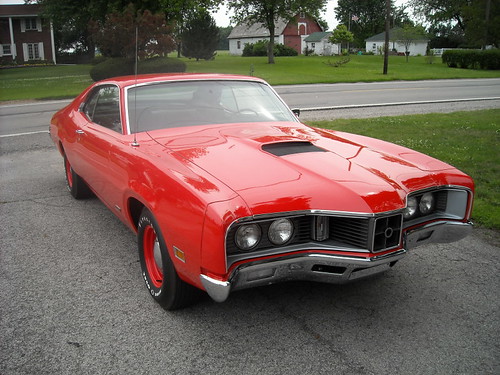
13. **Lincoln (Continental) Mark (1956-1960, 1969-1998)**
The Lincoln (Continental) Mark series, making its grand entrance in 1956, was a testament to American luxury and design prowess, building upon the revered Continental series that had captivated buyers from 1939 to 1948. From its inception, this vehicle was unequivocally positioned as the company’s flagship model, a luxurious statement of engineering excellence and exclusive style. It represented the pinnacle of Lincoln’s offerings, designed to appeal to the most discerning of clientele.
However, the late 1950s proved to be a challenging period for Lincoln, as the company faced financial distress, leading to a significant reorganization of several Ford brands. Despite these corporate upheavals, the prestige and recognition associated with the Continental Mark nameplate were too valuable to abandon. This resilience led to a pivotal moment for the series.
In a strategic move, Lincoln-Mercury relaunched the Continental Mark series for the 1969 model year, demonstrating a renewed commitment to its luxury heritage. This successful revival paved the way for six successive generations, each further cementing the Mark’s status as a quintessential American luxury car. The Lincoln (Continental) Mark, in its original and subsequent forms, stands as a symbol of enduring elegance and a legacy of opulence that is no longer produced, but forever appreciated by enthusiasts.
Car Model Information: 2023 BMW X3 xDrive30i
Name: Lincoln Continental
Caption: 2019 Lincoln Continental
Manufacturer: Lincoln Motor Company
Production: 1939–1942,1946–1948,1956–2002,2016–2020
ModelYears: 1940–1942,1946–1948,1958–1980,1982–2002,2017–2020
Class: Full-size car,luxury car
Layout: Longitudinal engine,Front-engine, rear-wheel-drive layout
Categories: 1930s cars, 1940s cars, 1950s cars, 1960s cars, 1970s cars
Summary: The Lincoln Continental is a series of mid-sized and full-sized luxury cars produced between 1939 and 2020 by Lincoln, a division of the American automaker Ford. The model line was introduced following the construction of a personal vehicle for Edsel Ford, who commissioned a coachbuilt 1939 Lincoln-Zephyr convertible, developed as a vacation vehicle to attract potential Lincoln buyers. In what would give the model line its name, the exterior was designed with European “continental” styling elements, including a rear-mounted spare tire.
In production for over 55 years across nine different decades, Lincoln has produced ten generations of the Continental. Within the Lincoln model line, the Continental has served several roles ranging from its flagship to its base-trim sedan. From 1961 to 1976, Lincoln sold the Continental as its exclusive model line. The model line has also gone on hiatus three times. From 1949 to 1955, the nameplate was briefly retired. In 1981, the Continental was renamed the Lincoln Town Car to accommodate the 1982 seventh-generation Continental. After 2002, the Continental was retired, largely replaced by the Lincoln MKS in 2009; in 2017, the tenth-generation Continental replaced the MKS.
As part of its entry into full-scale production, the first-generation Continental was the progenitor of an entirely new automotive segment, the personal luxury car. Following World War II, the segment evolved into coupes and convertibles larger than sports cars and grand touring cars with an emphasis on features, styling, and comfort over performance and handling. From 1956 to 1957, the Continental nameplate was the namesake of the short-lived Continental Division, marketing the 1956–1957 Continental Mark II as the worldwide flagship of Ford Motor Company; as a second successor, Ford introduced the Continental Mark series in 1969, produced over six generations to 1998.
Along with the creation of the personal luxury car segment, the Lincoln Continental marked the zenith of several designs in American automotive history. The Continental is the final American vehicle line with a factory-produced V12 engine (1948), the final four-door convertible (1967), and the final model line to undergo downsizing (for the 1980 model year).
American production of the Continental and MKZ, its only two sedans, ended in 2020 thereby making Lincoln a crossover/SUV-only brand in the US.
Get more information about: Lincoln Continental
Buying a high-performing used car >>>
Brand: Lincoln Model: Continental Mark
Price: $35,086 Mileage: 44,248 mi.

14. **Ford Ranchero (1957 -1979)**
The Ford Ranchero, a truly innovative and stylish pickup truck, arrived on the American scene in 1957, immediately offering a unique blend of passenger car comfort and pickup truck utility. This pioneering vehicle was much more than a simple workhorse; it represented a novel interpretation of truck-and-car fusion, blurring the lines between these traditionally distinct segments. Its car-like front end and interior, combined with an open bed, provided an appealing solution for a wide range of buyers.
The Ranchero’s concept wasn’t entirely new globally, as Australia had seen its ‘Ute’ counterpart in 1956, but Ford’s version was distinctly American-made, tailored to the tastes and needs of the domestic market. This originality and clever design led to its remarkable longevity, with the Ranchero spanning an impressive seven eventual generations throughout its production run. Each iteration refined the concept, adapting to new platforms and styling trends while retaining its core identity.
Its success underscored a growing demand for versatile vehicles that could serve multiple purposes, from daily commuting to light hauling, all while maintaining a degree of style and driving comfort. The Ford Ranchero carved out a unique and influential niche in American automotive history, demonstrating the potential for hybrid vehicle designs long before the term became commonplace. Though its production ceased in 1979, the Ranchero remains a celebrated icon of American ingenuity, a classic that masterfully combined two worlds.
Car Model Information: 1964 Ford Ranchero Base
Name: Ford Ranchero
Aka: Ford Falcon Ranchero , Ford Fairlane Ranchero , Meteor Ranchero
Caption: 1957 Ford Ranchero
Manufacturer: Ford Motor Company
Class: Full-size Ford
Production: 1957–1979
BodyStyle: coupe utility
Related: Ford Fairlane (North American),Ford Falcon (North American),Ford Galaxie,Ford Torino,Ford LTD II,Ford Durango
Layout: FR layout
Categories: Articles with short description, CS1 Spanish-language sources (es), Commons category link from Wikidata, Coupé utilities, Ford vehicles
Summary: The Ford Ranchero is a coupe utility that was produced by Ford between 1957 and 1979. Unlike a standard pickup truck, the Ranchero was adapted from a two-door station wagon platform that integrated the cab and cargo bed into the body. A total of 508,355 units were produced during the model’s production run. Over its lifespan it was variously derived from full-sized, compact, and intermediate automobiles sold by Ford for the North American market.
During the 1970s, the Ranchero name was used in the South African market for a rebadged Australian Ford Falcon utility. Shipped from Australia in complete knock down (CKD) form, these vehicles were assembled in South Africa at Ford’s plant in Port Elizabeth. In Argentina, a utility version of the locally produced Ford Falcon was also called Ranchero.
The original Ranchero sold well enough to spawn a competitor from General Motors in 1959, the Chevrolet El Camino.
Get more information about: Ford Ranchero
Buying a high-performing used car >>>
Brand: Ford Model: Ranchero
Price: $18,500 Mileage: 18,357 mi.
Read more about: Unearthing Automotive Gold: 10 Jaw-Dropping ’70s Muscle Cars You Can Still Own for a Steal
As our fascinating journey through the classic American cars of the 1950s and early 1960s concludes, it becomes profoundly clear that this era was a crucible of automotive brilliance. Each vehicle we’ve explored, from the innovative Nash Statesman to the genre-defining Ford Ranchero, represents more than just steel and horsepower; they are encapsulations of a dynamic period in American history. These cars pushed boundaries, set trends, and captured the heart of a nation that was enthusiastically embracing progress and personal mobility. Their stories are a rich tapestry woven with engineering daring, stylistic flourish, and the sheer joy of the open road. Though the production lines for these specific models have long fallen silent, their spirit continues to thrive in the collections of enthusiasts and in the collective memory of a golden age. They remind us that true automotive artistry, born of passion and vision, holds an enduring power, inspiring admiration for generations to come.

